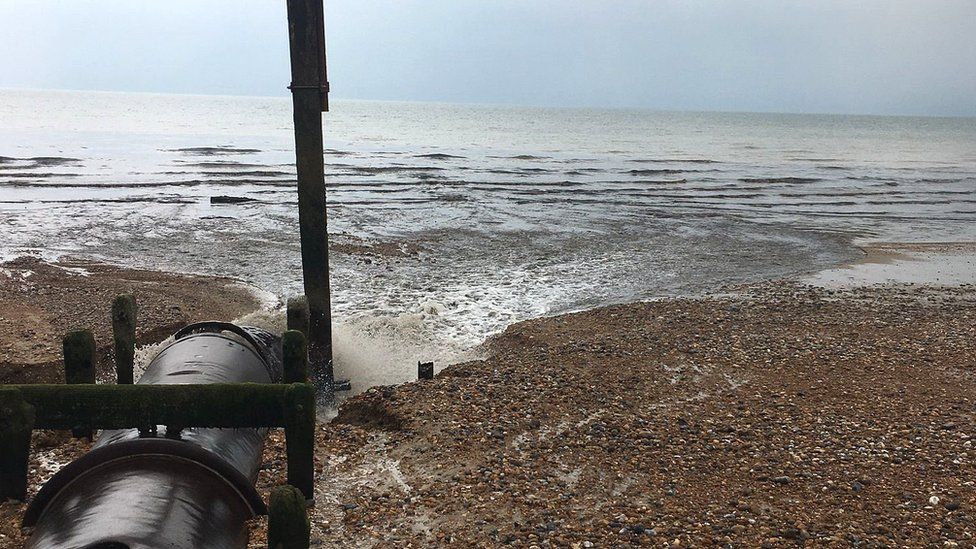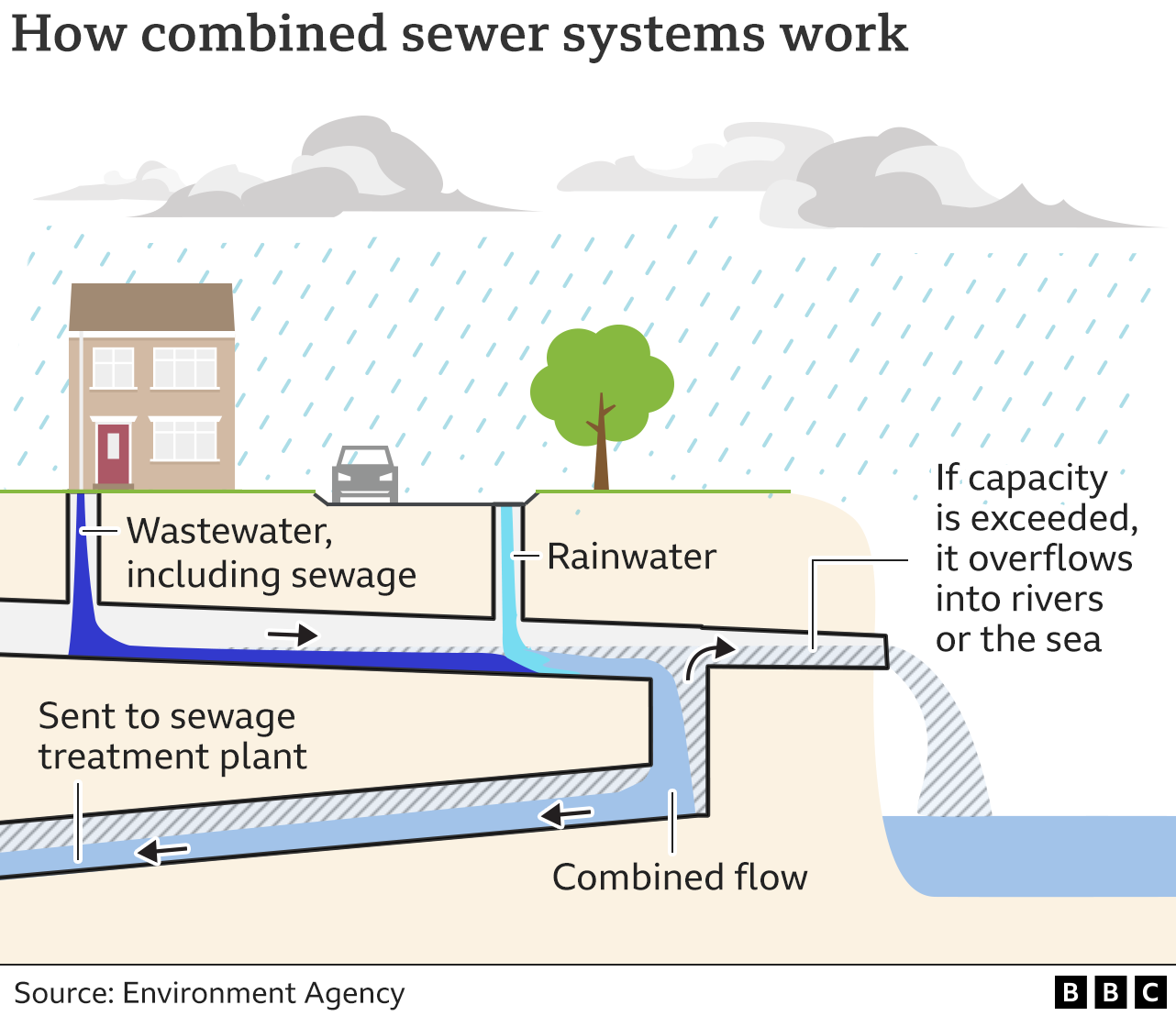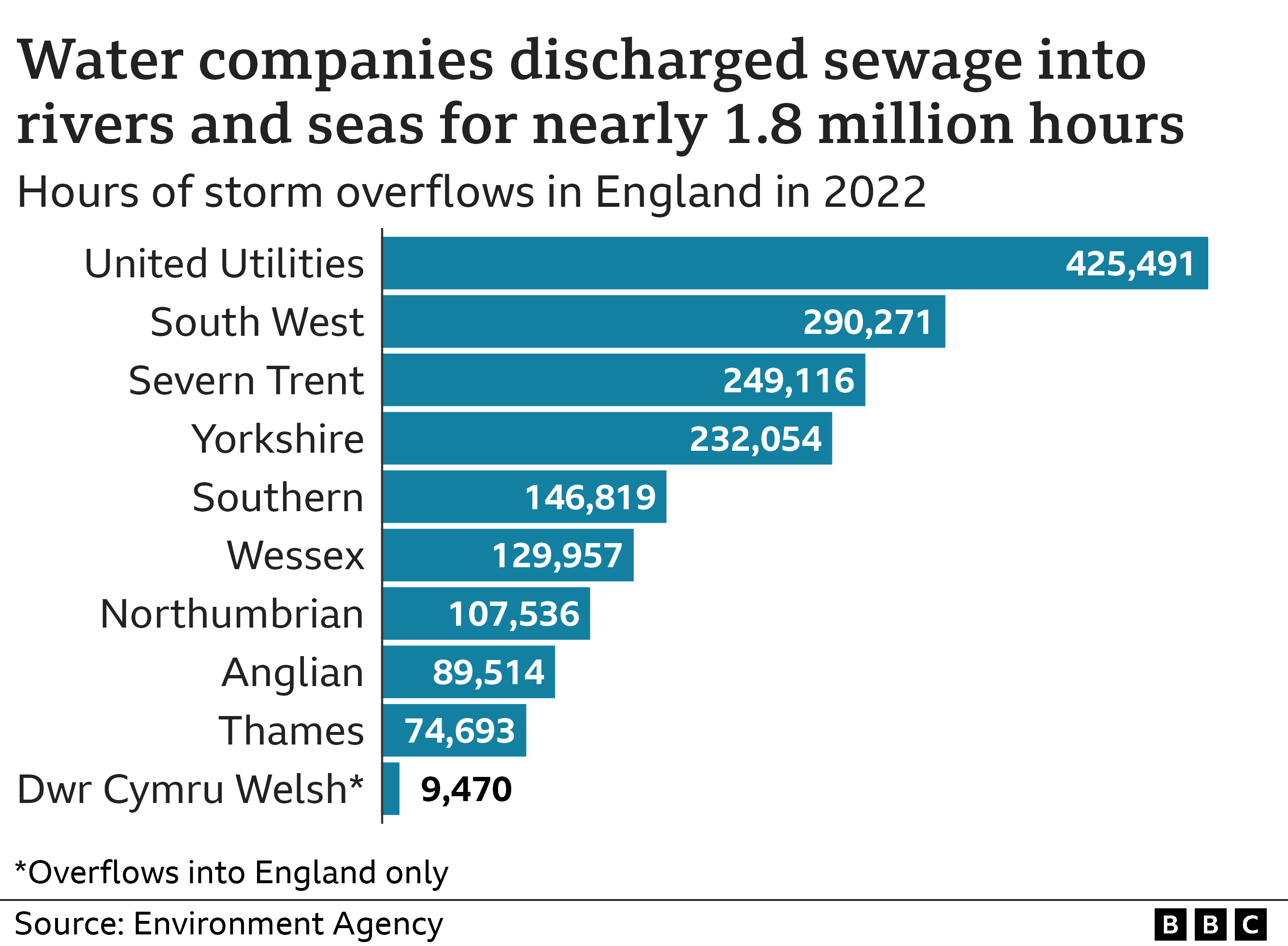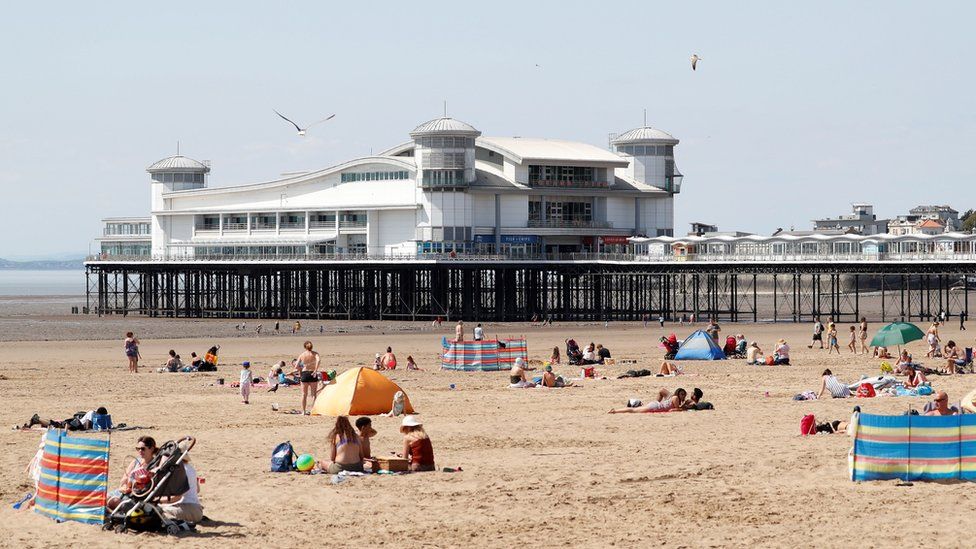Why is raw sewage pumped into rivers and the sea?
Why is raw sewage pumped into rivers and the sea?
-
Published
22 May

Image source,
Fay
Water companies have apologised for the amount of sewage being spilled into rivers and seas, but have faced criticism for saying customer bills will have to rise to deal with the problem.
Why is sewage pumped into the sea and rivers?
Most of the UK has a combined sewerage system, meaning that both rainwater and wastewater – from toilets, bathrooms and kitchens – are carried in the same pipes.
Usually, all the waste is carried to a sewage treatment works.
But the Environment Agency (EA), which covers England, says capacity can sometimes be exceeded during heavy rainfall, especially when dry ground is unable to quickly absorb water.
This could lead to inundation of sewage works and potential flooding of homes, roads and open spaces.
For this reason, the system is designed to overflow occasionally and discharge excess wastewater into the sea and rivers.
This practice is known as combined sewer overflows (CSOs) and is permitted.

The EA requires water companies to monitor the overflows, and they can be investigated and fined if they fail to meet certain requirements.
The government says it plans to change laws so that the EA can issue unlimited penalties for sewage dumping.
How often is sewage released?
Data shows the use of overflows is not occasional, as it is meant to be.
In 2022, raw sewage was pumped into rivers and seas for 1.75 million hours last year – on average 825 times per day.
This is down 19% on the 2021 figures, because of drier weather rather than water companies’ action, according to the EA.

In 2022, Ofwat, the water regulator for England and Wales, launched cases against six water companies over discharging sewage at times when this should not have happened.
How can I know if the sea is clean?
The Environment Agency monitors pollution across England. It says that between May and September, “weekly assessments measure current water quality, and at a number of sites daily pollution risk forecasts are issued”. You can search its website by location.
There are similar websites where you can find out about beaches and bathing water in Scotland, Wales or Northern Ireland.
Campaign group Surfers Against Sewage has created an interactive map showing pollution risk warnings along the coast and rivers.
Your device may not support this visualisation
What are the health risks?
Swimmers are warned to stay away when untreated sewage is discharged into the sea.
The contaminated water could lead to serious illnesses.

Image source,
Getty Images
Image caption,
Last year people were advised not to swim at Weston-super-Mare and other nearby beaches
What is being done about it?
In April, the government announced its new plan to improve water quality.
While announcing potential unlimited fines for water companies dumping sewage, the environment secretary Therese Coffey also said there was “no way we can stop pollution overnight”.
She said that building more infrastructure such as super sewers could add “hundreds to people’s bills”.
Matt Browne of the Wildlife and Countryside Link, a coalition of environment and wildlife organisations in England, welcomed the government’s announcement, but said: “We are still waiting to see a comprehensive plan built around delivering on a long-term target for the health of our waters”.
There were previous attempts to limit sewage dumps too.
In 2021, Conservative MPs were criticised after 256 voted to reject a proposal by the House of Lords to require water companies to reduce sewage discharges.
They argued safeguards already existed and that new measures would cost billions.
Last year the government published its Storm Overflows Discharge Reduction Plan. It compels water companies, by 2035, “to improve all storm overflows discharging into or near every designated bathing water” and “75% of overflows discharging to high priority nature sites”.
Dr Imogen Napper, a researcher in marine pollution at the University of Plymouth, previously said that for government goals to be met, more “investment and accountability is required from water companies”.
A spokesperson for Water UK – a body representing the UK water industry – said last year that water firms “agree there is an urgent need” for action, and were investing more than £3bn between 2020 and 2025.
Is Brexit to blame?
Last year three French members of the European Parliament said they had written to the European Commission, asking it to take action to stop the UK from polluting the Channel and the North Sea.
Since Brexit, they said, the UK “has chosen to lower its water quality standards”.
The UK is no longer bound by EU environmental laws. But those laws were not directly regulating the frequency or number of sewage discharges.
According to Friends of the Earth, the UK’s Environment Act 2021 – which replaced the EU laws – brought “some useful changes” which included “efforts to stop companies filling our waterways with sewage”.
How clean are UK waters?
Sewage spills have only been routinely monitored for a few years, so it is difficult to tell how they have changed over time.
However, overall water quality has been monitored for decades.
The Environment Agency says in England 16% of surface waters achieved “good” ecological status, including:
- 14% of rivers and lakes
- 19% of estuaries
- 45% of coastal waters
- 93% of designated bathing waters
Water quality is generally higher in other parts of the UK.
In Scotland, 63% of surface waters are classed as having “good” ecological status.
In Wales this is 40%, and in Northern Ireland 31%.
Related Topics
- Sewage






